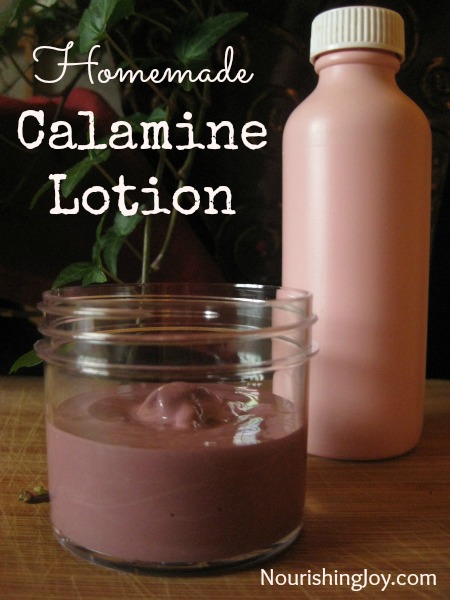Homemade Calamine Lotion
Recipe #1
1/4 cup zinc oxide
1/2 teaspoon iron oxide
4 teaspoons bentonite clay
4 teaspoons baking soda or 2 teaspoons calcium hydroxide (“cal” can be found in Latino groceries)
1/4 cup water
1/2 teaspoon glycerin (optional)
3-4 drops lavender essential oil or other antibacterial essential oil (optional)
1/2 teaspoon iron oxide
4 teaspoons bentonite clay
4 teaspoons baking soda or 2 teaspoons calcium hydroxide (“cal” can be found in Latino groceries)
1/4 cup water
1/2 teaspoon glycerin (optional)
3-4 drops lavender essential oil or other antibacterial essential oil (optional)
Recipe #2
1/4 cup zinc oxide
4 teaspoons pink Kaolin clay
4 teaspoons baking soda or 2 teaspoons calcium hydroxide
1/4 cup water
1/2 teaspoon glycerin (optional)
3-4 drops lavender, peppermint, camphor, tea tree, or other antibacterial/antipuretic essential oil (optional)
4 teaspoons pink Kaolin clay
4 teaspoons baking soda or 2 teaspoons calcium hydroxide
1/4 cup water
1/2 teaspoon glycerin (optional)
3-4 drops lavender, peppermint, camphor, tea tree, or other antibacterial/antipuretic essential oil (optional)
Method:
Combine all ingredients in a small bowl and whisk until smooth. Store in the refrigerator for 1-2 weeks.
If you’d like to store it for longer than that, here’s an idea: Whisk together all powdered dry ingredients and store in a bottle or jar. When needed, place only as much as you need into a bowl and add water, glycerin, and essential oils. This way it’s fresh and effective!

http://www.nourishingjoy.com/homemade-calamine-lotion/
The Ingredients
Zinc Oxide: Zinc oxide been used for centuries as a skin protectant and ointment, with references in medical literature showing up in India as early as 500 BC and in Greece in the first century AD.1 It is helpful in the treatment of skin wounds and traumas and doesn’t absorb into the skin, which allows it to be an effective topical treatment and promotes healing.
Iron Oxide: This is what gives calamine its characteristic pink color. The mixture known as “calamine” is a mixture of zinc oxide and about 0.5% iron oxide.2 We’re using more than that small amount in this recipe to make it easy, and it’s mainly here as a colorant rather for its medicinal properties.
Bentonite Clay: Bentonite clay is typically used for internal detoxification, but because commercial preparations of calamine use bentonite, I used it too. However, the pink kaolin clay I happened to find at my local soapmaking supply store actually produced a better color AND kaolin clay is more commonly used in topical cosmetic preparations because of its very gentle detoxification on the skin, so even though it’s not an exact reverse engineering of the store-bought stuff, I’d recommend the kaolin clay.3
Baking Soda: Baking soda is wonderful as an anti-itching agent, it’s cheap and plentiful, and it’s typically in every kitchen, making it an important part of this recipe. In store-bought calamine lotion, calcium hydroxide is what performs this function, but baking soda is definitely more common. If you’d like to try the calcium hydroxide, you can find it at Latin grocery stores under the name “cal” or “slaked lime,” as it’s used in the process of grinding corn for tortillas.
Glycerin: Glycerin is used in cosmetic applications as a skin protectant and a moisturizer. Even in the small amount used here, it makes the homemade calamine lotion a bit smoother and softer. It’s definitely optional, so if you don’t have it, don’t worry about it.
Essential Oils: Essential oils are included here both for the scent and the healing properties. Be sure to use the highest quality you can afford since this will be applied directly to the skin. Lavender, peppermint, camphor, and tea tree oil are all known for their ability to relieve itching, so those are certainly some of the most popular, but consult a knowledgeable aromatherapist if you want to get creative with your oils, as there are certainly others that would be helpful.
Where to Find Ingredients for Homemade Calamine Lotion
You can find ingredients at amazon.com or the following places
Most of these ingredients can be found at your local health food store, including the bentonite clay.
Both clay and iron oxide can be found at any soapmaking supply store (iron oxide is typically used for tinting homemade cosmetics like blush and bronzer).
The zinc oxide I pick up for a dollar or two at my local pharmacy.
And calcium hydroxide can be found at Latin grocery stores under the name “cal” or “slaked lime.”